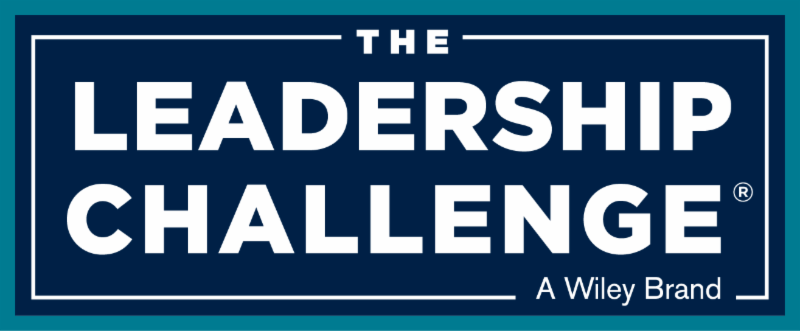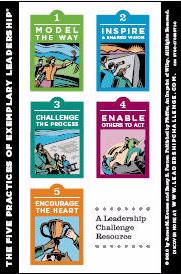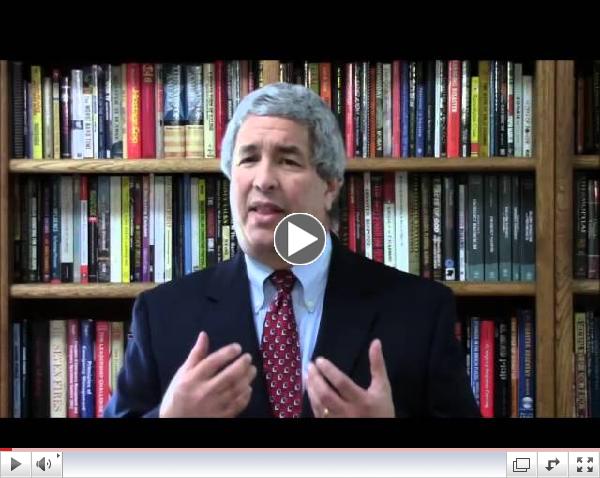This video provides a very brief overview of the Dust Bowl in the 1930's. The full story is much more tragic. Poor farming practices and an extended drought led to severe dust storms and the largest migration in US history. Some 3.5 million people were displaced by the disaster. The crisis required a national response that was unprecedented and just barely avoided having the entire region abandoned and declared an uninhabitable desert. |
The following are excerpts from my blog
Canton on Emergency Management. Please visit my blog to see the rest of my articles.
We think of disasters as having a single cause but disasters are complex constructs caused by a conjunction of varying factors.
|

What Is The Leadership Challenge?
 Is leadership a learned behavior or an innate personality trait? While there are certainly naturally charismatic individuals who are considered "born leaders", leadership is a measurable set of behaviors that can be learned and taught. This is the conclusion arrived at by researchers Jim Kouzes and Barry Posner after years of rigorous research. Starting in 1982, Kouzes and Posner set out to understand what happened when leaders performed at their personal best. They conducted hundreds of interviews and reviewed hundreds of cases studies and survey questionnaires. What emerged were five fundamental practices common to extraordinary leadership achievements:
- Model the Way
- Inspire a Shared Vision
- Challenge the Process
- Enable Others to Act
- Encourage the Heart
The Leadership Challenge begins with a 360-degree assessment of thirty leadership behaviors associated with the five practices, the Leadership Practices Inventory. The results are used to identify opportunities for improving as a leader by increasing the frequency of specific behaviors. Based on over thirty years of research, the Leadership Challenge is an effective and practical tool for leadership development.
To find out more about the
Five Practices of Exemplary Leadership
, consider taking
The Leadership Challenge
. Just click on the icon below for more information:
|
|
| Click here to take The Leadership Challenge |
____________________________________
The Leadership Challenge: How to Make Extraordinary Things Happen in Organizations
by James M. Kouzes & Barry Posner
_______________________________
The Leadership Challenge is a registered trademark of John Wiley &
Sons, Inc.
|
Free Resource Guide for Solo Consultants
For solo consultants, true wealth is discretionary time. Don't waste yours on simple tasks that can be handled by technology. This free resource guide reveals the four essential online tools I use to manage my solo consulting practice and save hours of valuable time. And the best part is - they're free!
 Interested in exploring the world of consulting? My membership site might be just the resource you need to get started. You'll have access to blogs designed to answer very specific questions, a resource library of templates and articles, the opportunity to network with peers, and discounts on coaching and training programs. Download the free guide or click on the logo above to go straight to the site.
Interested in exploring the world of consulting? My membership site might be just the resource you need to get started. You'll have access to blogs designed to answer very specific questions, a resource library of templates and articles, the opportunity to network with peers, and discounts on coaching and training programs. Download the free guide or click on the logo above to go straight to the site.
|
|

M
y Blogs
Follow Me
|
|

Welcome to the September edition of Emergency Management Solutions.
I find it ironic that September is National Preparedness Month considering the many disasters we've been faced with this month. Florence was a classic example of cascading effects with its one-two punch of hurricane and floods. As I write this, Palu, Indonesia, is dealing with the aftermath of an earthquake and tsunami and Chuuk Lagoon in the Federated States of Micronesia (a place I know well from my FEMA days) is the scene of an airline crash. It never stops.
On the plus side, next month is the IEAM conference in Grand Rapids. It is the single best opportunity for professional development and for networking with your peers and is always a fun time. Hope to see you there!
Regards,
|
|
_
________________________________________________
Strategic Planning
Using Your Vision Statement To Demonstrate Program Value
|
The comedian Rodney Dangerfield got a lot of mileage out of the phrase, "I don't get no respect." He could easily have been an emergency manager. Our programs are underfunded, our advice is disregarded, and we're the first to get the chop when things go wrong. Add to that the research that shows our elected officials are disengaged from emergency management issues and it's no wonder we feel like Rodney on occasion.
Part of the problem is that emergency management programs, like security and safety programs, tend to be viewed as cost centers. That is, they are perceived as consuming resources rather than contributing to the goals of the organization. We are the equivalent of a fire extinguisher: a necessary cost that most of the time just hangs around and looks good but does little else unless there is an emergency.
However, I submit that the problem lies with us. We have done little to demonstrate our value by aligning ourselves strategically with organizational goals. We're good at tactical and operational planning but we do not plan strategically.
|
|
_______________________
________
If you are having trouble viewing my featured article, try clicking on the link at the top of the page. You can always find my articles in the white paper section of my blog site,
Canton on Emergency Management.
|
|
Are You Ready for Your CEM?
Have you considered applying for the Certified Emergency Manager designation? Certification is important for two reasons. First, it recognizes you as a professional in emergency management and makes you part of small group that has earned the designation. Secondly, the more we create a critical mass of CEMs, the more we raise the status of our profession. I'm seeing more and more job announcements with CEM being desirable or preferred. One day I hope to see it required to get a job in emergency management.
The upcoming IAEM conference offers the opportunity to take the CEM exam. If you're planning on taking the exam be sure to check out the resources available at the
CEM Corner on the IAEM website. You'll find the exam standards and sample questions along with references for each standard.
Still making up your mind or need help applying? The
CEM Corner also provides resources for completing your application and preparing the required essay. Another resource that is often neglected is the
mentoring program. IAEM maintains a list of CEMs with experience with the CEM program who are willing to help candidates with advice and technical assistance in assembling their application materials.
Earning the CEM is not easy but it's one of the best investments you can make in your professional development.
Resources
This National Academies report looks at past warning research and the gaps in our current knowledge about use to set a research agenda for ways to improve our national warning systems
The National Institute of Standards and Technology has recently updated its framework on cyber-security. The latest version includes updates on authentication, assessing risk, cyber-security in the supply chain, and vulnerability disclosures.
This new guide series, created by the U.S. Secret Service, uses a threat assessment model to suggest comprehensive actions schools can take to limit exposure to targeted violence, such as active shooters. The series includes a full report, a model brief, a quick reference guide and related resources.
Professional Development Opportunities
Oct 19 - 25
Grand Rapids MI
The goal of the IAEM Annual Conference is to improve knowledge, competency level and collaborative skills. IAEM accomplishes this by attracting relevant high-profile
speakers to address current topics and practical solutions.
November 26-18, 2018
FEMA Emergency Management Institute
Emmitsburg, Maryland
Cost and Access: Free, apply in advance
Provides an overview of scientific principles and concepts shaping extreme events. Topics include basic scientific principles, geophysical and climate science in disasters, the scientific fundamentals of chemical, biological, radiological and nuclear threats.
The 21st Annual Emergency Management Higher Education Symposium
June 3-6, 2019
FEMA Emergency Management Institute
Emmitsburg, MD
More information to follow soon.
|
|
|
No More Heroes?
One of the current trends that bothers me is the emphasis placed on making sure are "heroes" are pure and without sin. We're seeing statues removed, the names of buildings changed, and historical references removed. I even read an article recently that pointed out "disturbing" facts about Disney Princesses! What's going on here?
Two things come to mind. The first is that many people lack a sense of history. That is, they attempt to apply twenty-first century morals to other times and cultures, particularly where slavery and colonialism are concerned. With hindsight, we can see the harm inherent in these but someone living at the time would have had a very different view. Slavery, for example, was an integral part of the economic structure of Imperial Rome and a Roman citizen would not have thought it an evil institution.
A second issue is that people are not all good or all bad and the image we hold of them depends on your subjective viewpoint as to what we consider important. I am an admirer of the Marquis of Pombal who guided the recovery of Lisbon after the 1755 earthquake. He was an amazing visionary who integrated mitigation into the rebuilding of the city. He was also a ruthless despot who took advantage of the opportunity to eliminate his political rivals.
Perhaps the issue is that we focus too much on the individual rather on their accomplishments. The Spartans were able to train constantly for war because they relied on slaves to do all the work necessary for survival. Does this detract from the stand of Leonidas and his 300-man bodyguard at Thermopylae, a battle that affected the course of Western civilization? It may be time to stop judging our predecessors by impossible standards, acknowledge that they weren't perfect, and recognize that great deeds can be accomplished even by "bad" people.
|
 The Worst Hard Time: The Untold Story of Those Who Survived The Great American Dust Bowl The Worst Hard Time: The Untold Story of Those Who Survived The Great American Dust Bowl
By Timothy Egan
The Dust Bowl is largely forgotten now but coming on the heels of the Great Depression it was an ecological disaster that displaced over 3 million people and very nearly turned the Great Plains into a desert.
The conditions that spawned the Dust Bowl didn't occur overnight and did not have a single cause. Timothy Egan tells the story through the histories of several families that did not join the great migration to states like California but chose to stay. More a history of the region than just a straight forward narrative of the disaster, Egan's book shows the motivation behind the urge to turn an inhospitable part of the United States into farmland. Heavier than normal rainfall and high prices for wheat encouraged initial growth. As the Depression increased, depressed wheat prices forced the planting of even more wheat to break even. The result was a denuding of the land just as it was hit with an eight year drought.
How the survivors and the government dealt with the crisis is the core of Egan's book and well worth the read. Egan makes the point that the Dust Bowl was not a "typical" disaster and required an approach beyond just the provision of relief. As we wrestle with climate change, Egan's book is a reminder of the importance of anticipating problems and implementing mitigation. Highly recommended.

|
|

Emergency Management: Concepts and Strategies for Effective Programs
by Lucien G. Canton

|
|
Need a speaker for your next conference? I offer keynotes, seminars and workshops.
 |
|
Three Reasons Why I'm the Right Speaker for Your Conference
|
|
|
Speaking Engagements
It's the End of the World! What Do We Do Now?
Oct 24, 2018
Grand Rapids MI
|
|
| |
|